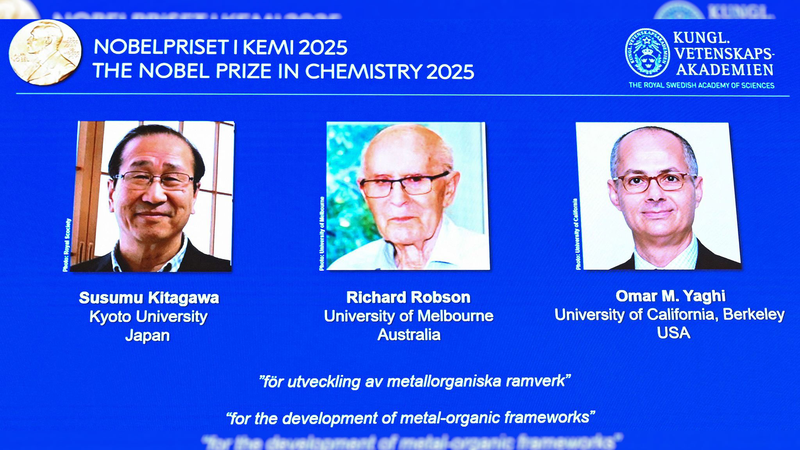The 2025 Nobel Prize in Chemistry has been awarded to Susumu Kitagawa, Richard Robson, and Omar M. Yaghi for their groundbreaking work on metal-organic frameworks (MOFs). These microscopic architectures are transforming how we think about materials, offering innovative solutions to some of our planet's biggest challenges.
So, what exactly are MOFs? Imagine building a material that's mostly empty space–like a microscopic sponge–custom-designed to trap, store, and separate specific molecules. Despite their tiny size, a sugar-cube-sized chunk of MOF can have a surface area equal to a football pitch, thanks to a network of nano-sized channels.
Why MOFs Matter
- Climate action: MOFs can capture carbon dioxide directly from the air.
- Water harvesting: They can extract fresh water from even arid desert air.
- Pollution cleanup: MOFs filter out harmful forever chemicals and pharmaceutical residues from water.
- Safe storage: They can securely trap toxic gases for research or disposal.
Looking ahead, the laureates envision integrating MOFs with renewable energy systems to not only capture carbon and water but also convert them into useful chemicals and fuels. This next frontier could help close the loop on waste and emissions.
The unforeseen opportunities for custom-made materials are only beginning, says Omar M. Yaghi, highlighting how MOFs are poised to reshape chemistry and sustainability.
As digital natives, entrepreneurs, and global citizens, this breakthrough offers a glimpse of how cutting-edge science can translate into real-world impact. From powering startups in emerging markets to inspiring sustainable travel technologies, MOFs remind us that big changes often start with tiny structures.
Reference(s):
cgtn.com



